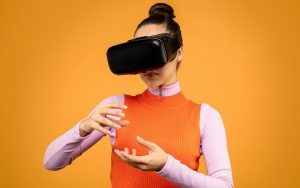Revolutionizing innovative teaching methods through teaching strategies
Education has always been an ever-evolving field, with new research and developments constantly pushing the boundaries of teaching and learning. One of the most exciting developments in recent years has been the revolutionization of innovative teaching methods through teaching strategies. As technology continues to advance and students’ learning styles become more diverse, educators are reimagining the traditional classroom setting and exploring new ways to engage and inspire their students. In this article, we’ll delve into the concept of teaching strategies and how they are transforming the way we approach education.
The Importance of Teaching Strategies
Before we dive into the specifics of teaching strategies, let’s first understand why they are so crucial in modern education. According to research, the most effective teaching methods are those that cater to individual student needs, rather than a one-size-fits-all approach. This means teachers must be aware of each student’s unique learning style, strengths, and weaknesses, and tailor their teaching to address these differences.
This is where teaching strategies come in. These are techniques and methods that teachers use to create a more engaging and effective learning experience for their students. By incorporating various teaching strategies into their lesson plans, educators can reach a wider range of students and promote a deeper understanding of the material.
The Evolution of Teaching Strategies
The traditional teaching methods of lecturing and memorization have long been the standard in education. However, as technology and educational research have advanced, educators have recognized the need for a more interactive and student-centered approach. This has led to the development of various teaching strategies that have revolutionized the way we teach.
1. Project-Based Learning
Project-based learning (PBL) is a teaching strategy that places an emphasis on real-world scenarios and hands-on projects. It allows students to take control of their learning through research, collaboration, and problem-solving. PBL not only makes learning more engaging but also helps students develop critical thinking and creativity skills that are essential in today’s workforce.
2. Flipped Classroom
The flipped classroom is another innovative teaching strategy that has gained popularity in recent years. It involves students learning the core content at home through online videos, readings, or other resources, and then using class time for more interactive and practical activities. This method has shown to be particularly effective in subjects such as math and science, where students can use classroom time to work on problem sets and projects with the guidance of their peers and teachers.
3. Differentiated Instruction
Differentiated instruction is a teaching strategy that involves tailoring lessons to meet the individual needs of students. This can include modifying the pace, content, and level of instruction, as well as providing different assessment methods. By differentiating instruction, teachers can better accommodate students’ varying learning styles, abilities, and needs, ensuring no one is left behind.
The Impact of Teaching Strategies on Students
The use of teaching strategies has shown to have a positive impact on students, promoting a more engaging, effective, and personalized learning experience. By catering to students’ unique needs and learning styles, these methods can increase student motivation, retention, and understanding of the material. Moreover, students who are exposed to a variety of teaching strategies are better equipped to adapt to different learning environments and challenges in the future.
The Role of Technology in Enhancing Teaching Strategies
Technology has played a significant role in the evolution of teaching strategies. With the advent of online learning platforms, educational apps, and various digital tools, teachers now have access to a vast array of resources to enhance their teaching. These tools can help deliver content in a more interactive and engaging way, providing students with a more dynamic and immersive learning experience.
Moreover, technology has made it easier for teachers to differentiate instruction and cater to individual student needs. For example, online platforms allow for personalized learning paths and adaptive assessments, ensuring each student is receiving the support they need to succeed.
Final Thoughts
The traditional teaching methods of the past are no longer enough to meet the diverse learning needs of today’s students. By incorporating various teaching strategies and leveraging technology, we can create a more engaging, effective, and inclusive learning environment for our students. The teaching strategies discussed in this article are just a few examples of the many innovative techniques educators are adopting to revolutionize education. As we continue to push the boundaries and explore new ways of teaching, the possibilities for the future of education are endless.










